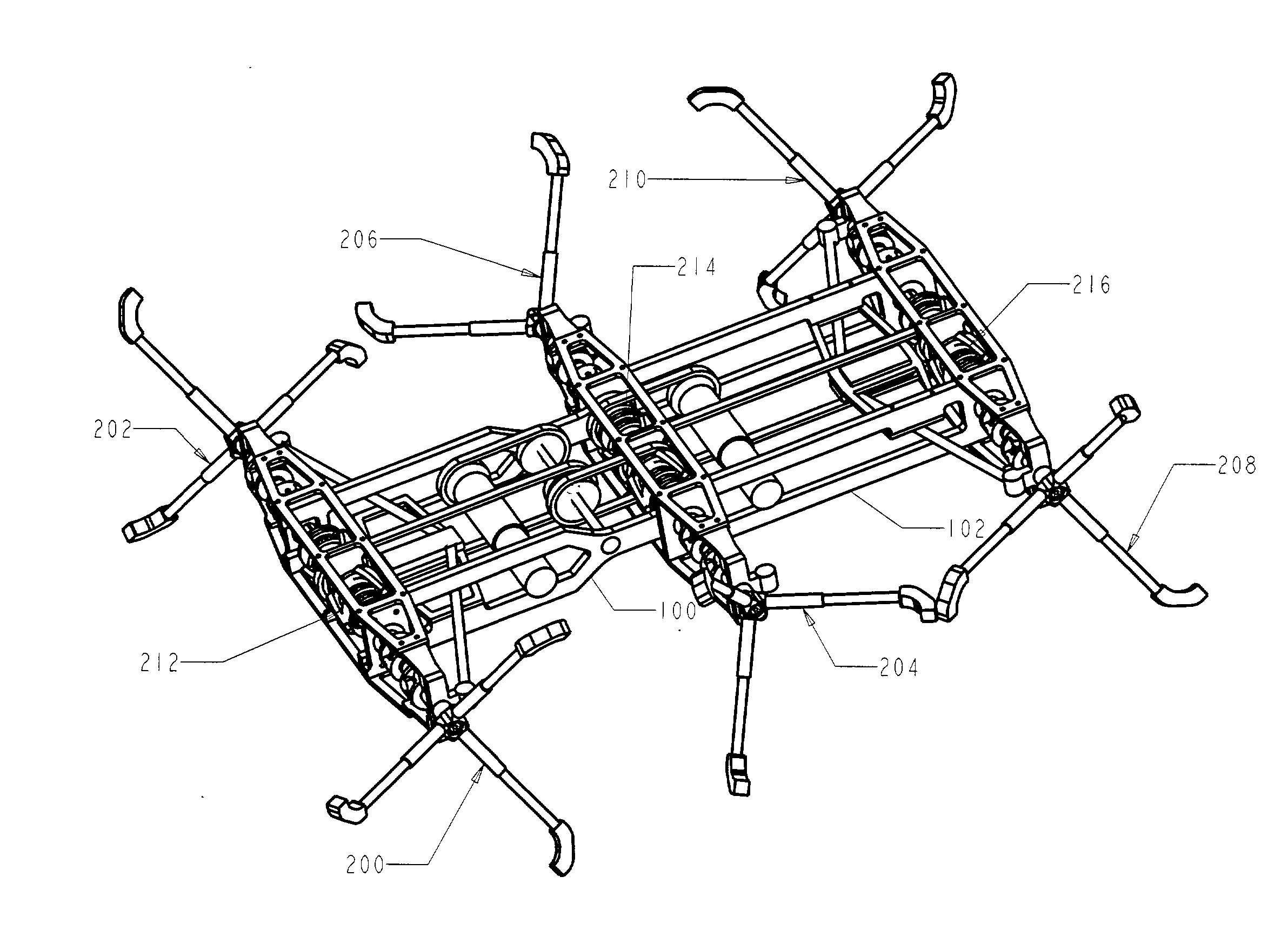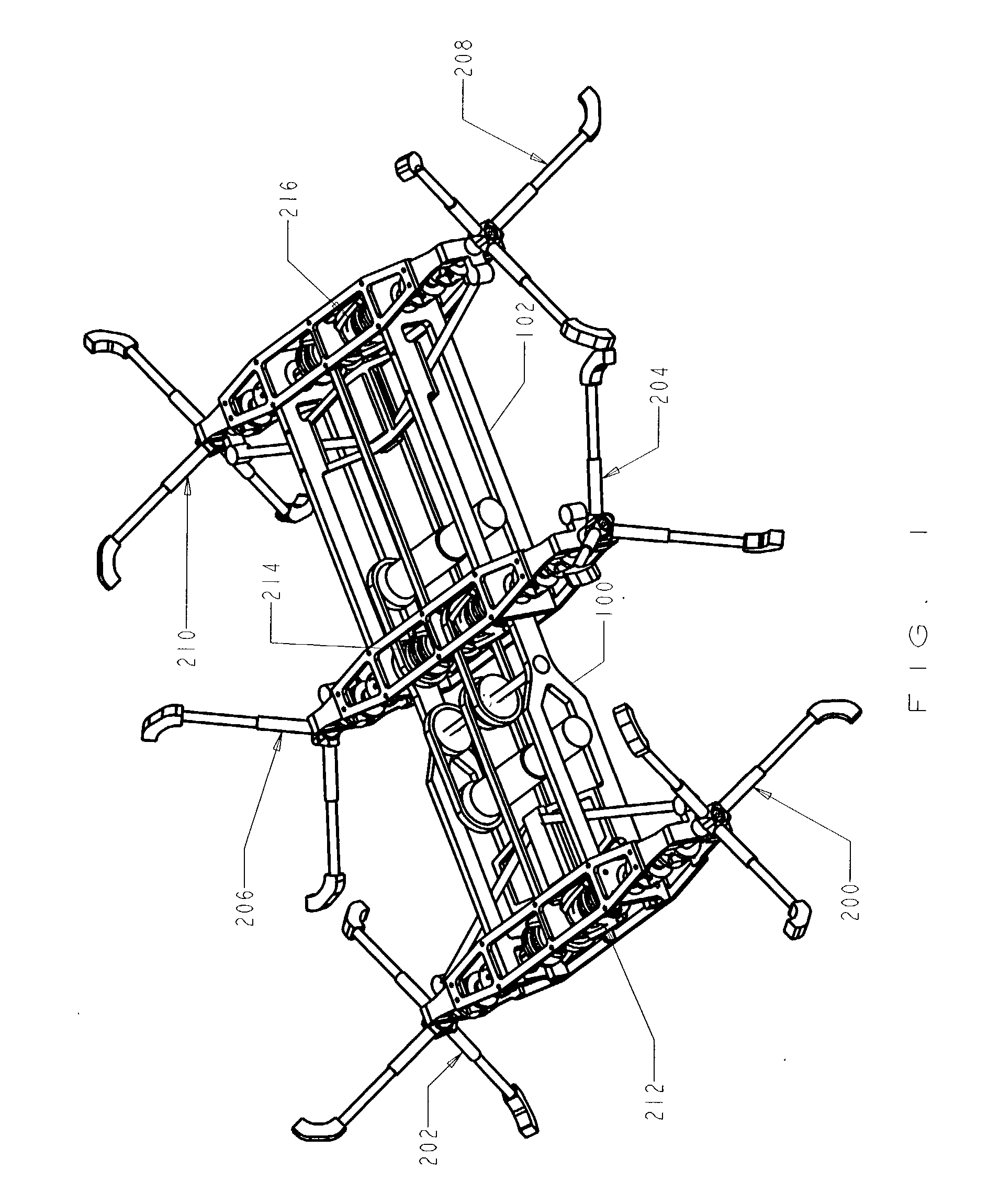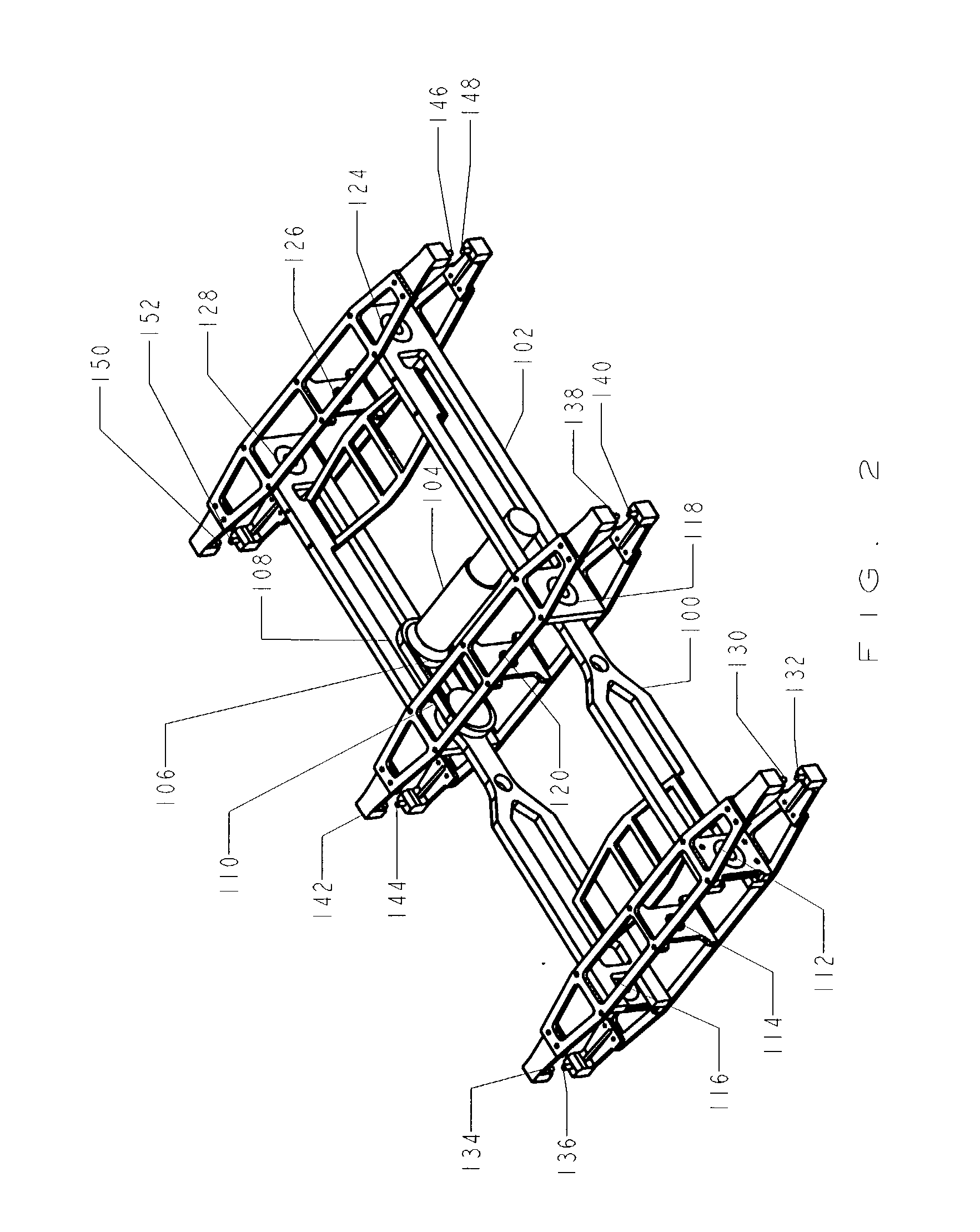Vehicle with compliant drive train
a technology of drive train and vehicle, applied in the direction of vehicles, transportation and packaging, etc., can solve the problems of inability to roll over obstructions, inability to adapt to use on varying terrains, absurd radius of wheels, etc., and achieve the effect of simple design, reduced vehicle weight, and high mobility
- Summary
- Abstract
- Description
- Claims
- Application Information
AI Technical Summary
Benefits of technology
Problems solved by technology
Method used
Image
Examples
Embodiment Construction
: DESIGN
[0158] A vehicle that embodies the invention is shown in FIG. 1.
[0159] Body: FIG. 2
[0160] The body of the vehicle, shown in FIG. 2, consists of a rigid front segment 100 and a rigid rear segment 102 that are articulated about an axis that coincides with the centerline of the middle axle 214 of the vehicle. A body-joint motor 104 with integral transmission, mounted on the rear segment of the body, rotates the body joint. A drive sprocket 106 is mounted on the output shaft of the transmission. A chain 108 connects the drive sprocket to a driven sprocket 110, which is attached to the front segment of the body. The centerline of the driven sprocket corresponds to the centerline of the middle axle. The motor rotates the front segment up or down relative to the rear segment.
[0161] Drive Train: FIG. 3A and 3B
[0162] A drive-motor 218 with integral transmission drives front 212, middle 214 and rear 216 axle assemblies through the drive train shown in FIGS. 3A and 3B. The front axle a...
PUM
 Login to View More
Login to View More Abstract
Description
Claims
Application Information
 Login to View More
Login to View More - R&D
- Intellectual Property
- Life Sciences
- Materials
- Tech Scout
- Unparalleled Data Quality
- Higher Quality Content
- 60% Fewer Hallucinations
Browse by: Latest US Patents, China's latest patents, Technical Efficacy Thesaurus, Application Domain, Technology Topic, Popular Technical Reports.
© 2025 PatSnap. All rights reserved.Legal|Privacy policy|Modern Slavery Act Transparency Statement|Sitemap|About US| Contact US: help@patsnap.com



